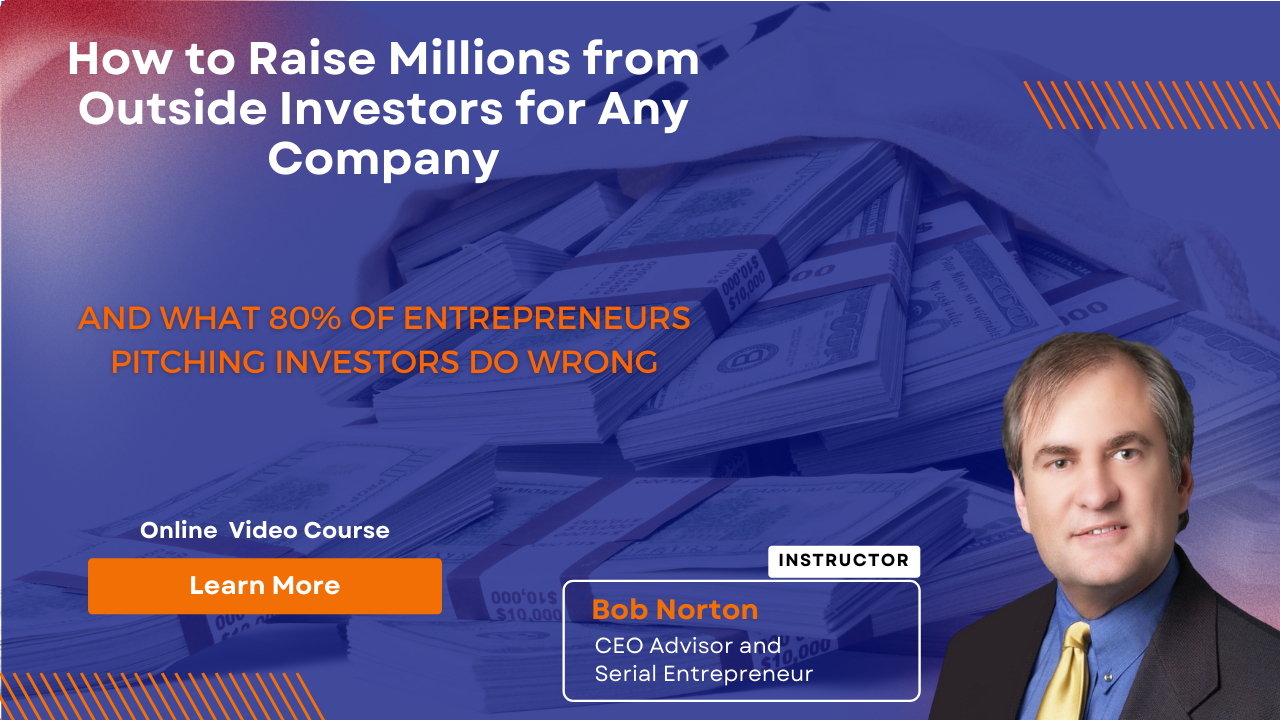What Kind of Team Do You Need to Raise Outside Funding?

Most investors agree that the number one factor they look at in any investment opportunity is the management team. Some even claim it is number one, number two, and number three because a good team will likely fix any problem. However, quantifying this and getting people to understand and rate their team objectively is needed to improve, and even understand, where your team is today.
Over ninety percent of teams are insufficient to achieve outside financing, though that is par for the course in a startup, and recognizing this with a plan for hiring can help jump that obstacle. This article has a small sample of the principles taught in The CEO and Entrepreneur Boot Camp in the area of management team development. It is the foundation of any company and the only way to overcome the thousands of other obstacles that will come up in the first couple of years of any venture.
Almost everyone thinks they have a “strong” team. They are almost always wrong. Not because they are dishonest, but because they can only rate this complex area up to the level they themselves have achieved in the past. And most people have never been part of a top, or high-performance, management team. Claiming a strong team when it is not true will usually sink any chance of investment from sophisticated investors. As almost nothing is more dangerous than not knowing where your company is weak.
The specific people and talents needed by the challenge of launching or growing any business will vary greatly by the business. However, it is certain to say that some top people with ten to twenty years expertise in the areas of risk and innovation will be needed along the way. Additionally, some formidable creativity and management skills will be needed if the company is expecting to get to even a few million in annual sales.
It is a common fallacy to believe a person with a good idea can build a successful company around an idea. This is totally false, and I challenge you to name even a single one.
When you look behind the curtain at any large success, there were either years of trial and error with time to adapt and learn, or senior people with serious management experience were recruited. Often the Founder remains as the face of the corporation, but with huge support in a management team behind them with varied skills and many decades of collective experience. If you think Zuckerberg, Gates, or even Elon Musk did it alone, you are dead wrong. It took them all a combination of hard lessons and experiences and the ability to attract complimentary talent to achieve their success. And all hired experienced management talent, or brought in partners to compliment their own areas of weakness.
To learn more, click here
All this said, no one is expected to know it all. A complimentary team is needed. Imagine trying to build a skyscraper with just a mason, or just a carpenter, or just an electrician. Yes, that is exactly what expecting to build a successful company with one person would be like. If your company can be run with less than seven people, then this does not really apply. Lifestyle companies run by a Founder can be built without all this talent, but the Founder will always be managing people directly and exceeded a couple million in sales will be highly unlikely. More importantly, a sale of that company is very difficult and will be at a low multiple of earnings or revenue. Now I am not saying there is anything wrong with building a lifestyle company, but the opportunity created will be a small fraction of what would be possible in a company with high growth potential, and you will not attract any serious capital.
Steve Jobs got fired from Apple before he learned to be a CEO. And most simply put in the decade or more to learn the arts of management, leadership, marketing, innovation and finance to become successful Entrepreneurs decades into their careers. There are no shortcuts here. Even if you invent something patentable and there is no other solution in the world, 95% of the profits will still go to the team, investors and employees that execute on that idea to build the business. If you think you can or will do it alone, I can guarantee you will fail. In fact, your overconfidence will likely insure you will not even be able to attract a quality team or capital, as highly experienced people will not come to work for people without strong experience, integrity and leadership capabilities.
Founders also need a vision of the future to sell to attract strong talent and capital.
Some call this the “story” but this is an oversimplification.

Let’s walk through the basics of this model, though the many other uses and deep understanding would require a full course. You can also see a free course preview video here.
Each row represents a main area of the business. Anyone area can cause a business to fail, but typically the product development and marketing are the highest risk areas where the most experience is needed to succeed. It was Peter Drucker, The Father of Management, that said “a company only has two main functions: marketing and innovation”. I agree, as everything else is sort of commodity type skills requiring little creativity.
Each column represents a “level” of career experience. On average, I would estimate it takes five years to learn the bulk of things needed to master a single “Cell” of this Skills Set Matrix™. These columns map into traditional titles and roles in a larger business, but in a startup, everyone is expected to do multiple roles. To look at a single row for example, in (software) product development the four columns would be (left to right): Vice President of Engineering, Director of Software Development, Manager of Software Development, or Chief Architect, and lastly Software Engineer. Of course, there can be many subtle gradations along this spectrum of career growth, and it can vary by the company too.
Here is how an institutional investor will view a company without a history of financial performance:
Now for the bad news. For companies to bring in outside capital of any significant size, let’s say over $2 million, you will need a Level 8 to 10 team. For a seed round from angel investors of $250K or more, you will likely need a Level 5 team. Many will raise money from friends and family (and fools) with a Level #1 team. This will not impress anyone, but “skin in the game” always helps future investors know there is a cost of throwing in the towel during the inevitable rough times.
One key is to understand that the first round of money is to build the team, not just a product. Entrepreneurs falsely think once they have a product, they are set. Never true. Most risk follows this development in marketing, sales, and scaling. The mountain of challenges along the way from idea to success, whether that is an IPO, a $2M company, or an exit by the sale of the company, is long and hard. Best you know and plan on that to be prepared. Every startup is a marathon, not a sprint.
Now, I suspect most people reading this might be getting a little depressed because they thought raising money was a lot easier than it really is today. When all you see in the new headlines are announcements of big deals closing, this is not surprising. If they published each failure, there would be about 2,000 for every successful fundraising effort. But that would not be new, as it is happening hundreds of times a day.
 |
Learn more about our Growth and Scaling (GSP) |
|
For a free video consultation call on what your |
What you want to think about is that knowing this in advance is the best way to prepare. I was preparing to launch my first company for three years or more, knowing it would come eventually. And the reality is I was, and you should be, building skills every day through your entire career. What I want the most important take-away to be from this article to be, though, is that a well-rounded team is the only way to build a significant company. A team that addresses the key innovations, risks, and operational needs of the proposed business is needed. That is never one person. And only a significant company vision, generally at least $10 million-plus revenues for angels, and $100 million or more revenues for institutional capital, will have a strong chance of raising funding. One reason for this is that the downside is always a 100% loss of the investment. So, investors will justifiably want to bet on the larger opportunities first to make up for the many investments that will never offer any return. This is appropriate to make up for the high risk of investing in new companies.
Now for the good news. Any company can become a $100 million company because a company is just a legal entity you put products and services into. So, the only limit of developing a $100 million business plan is your own imagination. And, of course, that of your collective team.
Join the course How to Raise Millions from Outside Investors
Bob Norton is a long-time Serial Entrepreneur and CEO with four exits that returned over $1 billion to investors. He has trained, coached and advised over 1,000 CEOs since 2002. And is Founder of The CEO Boot Camp™ and Entrepreneurship University™. Mr. Norton works with companies to triple their chances of success in launching new companies and products. And helps established companies scale faster using the six AirTight Management™ systems. And helps companies successfully raise capital.
What can we help you with today? Scaling, training, consulting, coaching?
Call (619) SCALE06 or (619) 722-5306 9am-6pm CT
Or Schedule a free 30-minute strategy session by clicking here.







